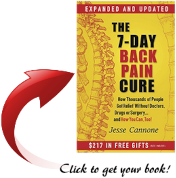Transcranial Magnetic Stimulation (TMS) involves using magnetic fields to stimulate specific areas of the brain involved in pain processing, offering a non-invasive method for controlling pain perception. TMS works by using a magnetic coil near your head. When electricity flows through this coil, it creates a magnetic field that goes through your skull and triggers small electric currents in your brain. And before we move on, I want to let you know that I am not a medical professional and what follows is not medical advice. It is my hope that this serves as a steppingstone for you to do your own research.

Image by studiogstock on Freepik
Here is how TMS can be used for pain management:
- Mechanism of Action: TMS works by delivering magnetic pulses to specific areas of the brain, influencing neural activity in those regions. In regard to pain management, TMS can target those brain regions involved in pain perception, control, and processing.
- Pain Control: By altering neural activity in these pain-related brain regions, TMS can control the transmission of pain signals, reduce pain sensitivity, and disrupt unhealthy pain processing pathways. This may lead to pain relief in individuals with chronic pain conditions.
- Types of TMS for Pain Management: High-frequency repetitive TMS and Theta Burst Stimulation (TBS) appear to be potential treatment options for pain management.
- Clinical Applications: TMS has been studied as a potential treatment for fibromyalgia, neuropathic pain, as well as migraine headaches.
- Safety and Considerations: TMS for pain management is generally considered safe when administered by trained professionals. However, as with any medical procedure, there are potential risks and side effects to consider. Patients with certain medical conditions or implanted devices may not be suitable candidates for TMS therapy. And moreover, optimal stimulation parameters and treatment protocols for pain management applications are still being refined through ongoing research.
- Future Directions: Further research is needed to fully determine the mechanisms underlying the pain-relieving effects of TMS and to optimize its use as a pain management tool. Clinical trials exploring the effectiveness of TMS in various pain conditions, as well as investigations into individualized treatment approaches, may help expand the use case of TMS in pain management in the future.

Overall, TMS appears to be a promising non-invasive, potentially effective treatment option for those who suffer from chronic pain, offering an alternative or complementary approach to traditional pain management strategies.
To Your Success & Freedom,
Glenn Shimabukuro



